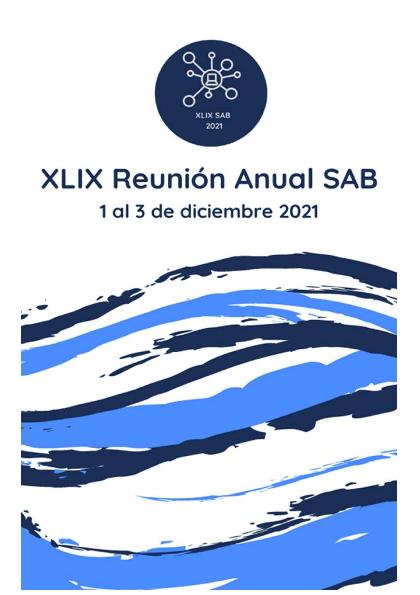Mostrar el registro sencillo del ítem
dc.contributor.author
Rodriguez Araujo, Noelia

dc.contributor.author
Hernando, Guillermina Silvana

dc.contributor.author
Corradi, Jeremias

dc.contributor.author
Bouzat, Cecilia Beatriz

dc.contributor.other
Delfino, Jose Maria

dc.date.available
2022-11-03T10:16:37Z
dc.date.issued
2021
dc.identifier.citation
A novel receptor target for old anthelmintic drugs evaluated in the nematode Caenorhabditis elegans; XLIX Reunión Anual de la Sociedad Argentina de Biofísica; Argentina; 2021; 71-71
dc.identifier.isbn
978-987-27591-9-3
dc.identifier.uri
http://hdl.handle.net/11336/176090
dc.description.abstract
Ivermectin (IVM) and piperazine (PZE), which are agonists of Glutamate-gated chloride channels and GABAA receptors, respectively, are marketed drugs used in anthelmintic therapy. Here we discovered a novel target of these drugs by evaluating their effects on the free-living nematode C. elegans. Nematodes contain a homomeric 5HT-gated chloride channel, MOD-1, that modulates locomotor behavior. Due to its absence in vertebrates, MOD-1 emerges as an attractive anthelmintic drug target. By electrophysiological recordings from cells expressing MOD-1, we deciphered its pharmacological properties and searched for novel ligands. Macroscopic currents activated by 5-HT showed that MOD-1 desensitizes slowly and recovers from desensitization in about 1 s. Dose-response curves revealed an EC50 for 5-HT of ~1 μM, similar to that of 5-HT3A receptors. The partial agonists tryptamine and 2-Me-5HT showed very different efficacies between MOD-1 and 5-HT3A receptors. IVM and PZE did not activate MOD-1 but acted as non-competitive antagonists. IVM produced a slight and irreversible inhibition whereas PZE led to a profound and reversible inhibition, indicating that MOD-1 may be involved in their anthelmintic effects. Also, the specific GABAA receptor agonists, muscimol and isoguvacine, inhibited MOD-1 currents. We performed locomotor activity assays of wild- type (WT) and mutant strains to establish MOD-1 as a novel anthelmintic target. We found that 5-HT produced a rapid paralysis of WT worms while the MOD-1 mutant strain was resistant, thus confirming MOD-1 as the functional target of 5-HT. The exposure of worms to 5-HT combined with IVM or PZE at concentrations at which they do not act at their canonical receptors reduced the 5-HT paralyzing effect, thus supporting the negative modulation of MOD-1 detected in electrophysiological recordings. This study contributes to our understanding of the action of drugs to treat parasitic diseases and to guide future drug discovery efforts.
dc.format
application/pdf
dc.language.iso
eng
dc.publisher
Sociedad Argentina de Biofísica
dc.rights
info:eu-repo/semantics/openAccess
dc.rights.uri
https://creativecommons.org/licenses/by-nc-sa/2.5/ar/
dc.subject
CHLORIDE CHANNEL
dc.subject
ANTHELMINTIC THERAPY
dc.subject
CAENORHABDITIS ELEGANS
dc.subject
DRUG TARGET
dc.subject.classification
Bioquímica y Biología Molecular

dc.subject.classification
Ciencias Biológicas

dc.subject.classification
CIENCIAS NATURALES Y EXACTAS

dc.title
A novel receptor target for old anthelmintic drugs evaluated in the nematode Caenorhabditis elegans
dc.type
info:eu-repo/semantics/publishedVersion
dc.type
info:eu-repo/semantics/conferenceObject
dc.type
info:ar-repo/semantics/documento de conferencia
dc.date.updated
2022-11-01T22:10:06Z
dc.journal.pagination
71-71
dc.journal.pais
Argentina

dc.journal.ciudad
BUENOS AIRES
dc.description.fil
Fil: Rodriguez Araujo, Noelia. Consejo Nacional de Investigaciones Científicas y Técnicas. Centro Científico Tecnológico Conicet - Bahía Blanca. Instituto de Investigaciones Bioquímicas de Bahía Blanca. Universidad Nacional del Sur. Instituto de Investigaciones Bioquímicas de Bahía Blanca; Argentina. Universidad Nacional del Sur. Departamento de Biología, Bioquímica y Farmacia; Argentina
dc.description.fil
Fil: Hernando, Guillermina Silvana. Consejo Nacional de Investigaciones Científicas y Técnicas. Centro Científico Tecnológico Conicet - Bahía Blanca. Instituto de Investigaciones Bioquímicas de Bahía Blanca. Universidad Nacional del Sur. Instituto de Investigaciones Bioquímicas de Bahía Blanca; Argentina. Universidad Nacional del Sur. Departamento de Biología, Bioquímica y Farmacia; Argentina
dc.description.fil
Fil: Corradi, Jeremias. Consejo Nacional de Investigaciones Científicas y Técnicas. Centro Científico Tecnológico Conicet - Bahía Blanca. Instituto de Investigaciones Bioquímicas de Bahía Blanca. Universidad Nacional del Sur. Instituto de Investigaciones Bioquímicas de Bahía Blanca; Argentina. Universidad Nacional del Sur. Departamento de Biología, Bioquímica y Farmacia; Argentina
dc.description.fil
Fil: Bouzat, Cecilia Beatriz. Consejo Nacional de Investigaciones Científicas y Técnicas. Centro Científico Tecnológico Conicet - Bahía Blanca. Instituto de Investigaciones Bioquímicas de Bahía Blanca. Universidad Nacional del Sur. Instituto de Investigaciones Bioquímicas de Bahía Blanca; Argentina. Universidad Nacional del Sur. Departamento de Biología, Bioquímica y Farmacia; Argentina
dc.relation.alternativeid
info:eu-repo/semantics/altIdentifier/url/https://biofisica.org.ar/reuniones-cientificas/reunionsab-previas/
dc.conicet.rol
Autor

dc.conicet.rol
Autor

dc.conicet.rol
Autor

dc.conicet.rol
Autor

dc.coverage
Internacional
dc.type.subtype
Reunión
dc.description.nombreEvento
XLIX Reunión Anual de la Sociedad Argentina de Biofísica
dc.date.evento
2021-12-01
dc.description.paisEvento
Argentina

dc.type.publicacion
Book
dc.description.institucionOrganizadora
Sociedad Argentina de Biofísica
dc.source.libro
XLIX Reunión Anual de la Sociedad Argentina de Biofísica
dc.date.eventoHasta
2021-12-03
dc.type
Reunión
Archivos asociados
